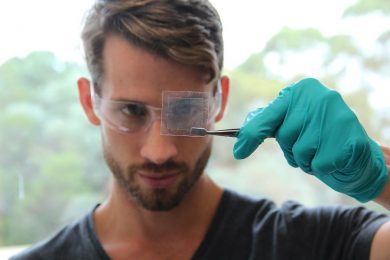Graphene is considered to be a wonder material of great strength and as a result, graphite exploration is running at an all time high. It’s made from carbon, is one atom thick, has an optical transparency of 97.3% and is the strongest material currently known. It can do anything from improving battery performance in energy devices to developing water purification membranes. “We’ve known its potential for a long time, but the major roadblock in commercialising it has always been the high-cost of producing quality, large-scale graphene,” says the CSIRO’s Rachael Vorwerk.
“Traditionally, graphene was grown in a highly-controlled environment with explosive compressed gases, long hours of operation at high temperatures (sometimes 1,000°C) and extensive vacuum processing.
In Lindfield, New South Wales, Australia, CSIRO scientists have found a cheaper and faster way to produce graphene. “We’ve said goodbye to expensive processes and discovered a unique, low-cost solution to grow graphene using soybean oil and ambient air.
“Alongside The University of Sydney, University of Technology Sydney, and The Queensland University of Technology, we’ve come up with GraphAir technology. The new technology transforms soybean oil – a renewable and natural material – into functional and highly controlled graphene films composed of one to a few layers, all in a single step. The technology reduces the cost of graphene production to a fraction of its current price, making it a whole lot cheaper to produce, while providing many new applications.
“Speaking of applications, it has excellent electronic, mechanical, thermal and optical properties. Further uses range from water filtration to renewable energy, sensors and personalised healthcare and medicine, just to name a few.
“But we haven’t stopped there. The team has also been testing other triglyceride (carbon)-containing precursors – like butter and even waste oils drained from your barbecue – which can also be used to create graphene.
“Now that we’ve figured out low-cost production method for graphene, our now the next step is getting it commercialised ASAP so our smart phones can have better-than-ever battery performance.”










